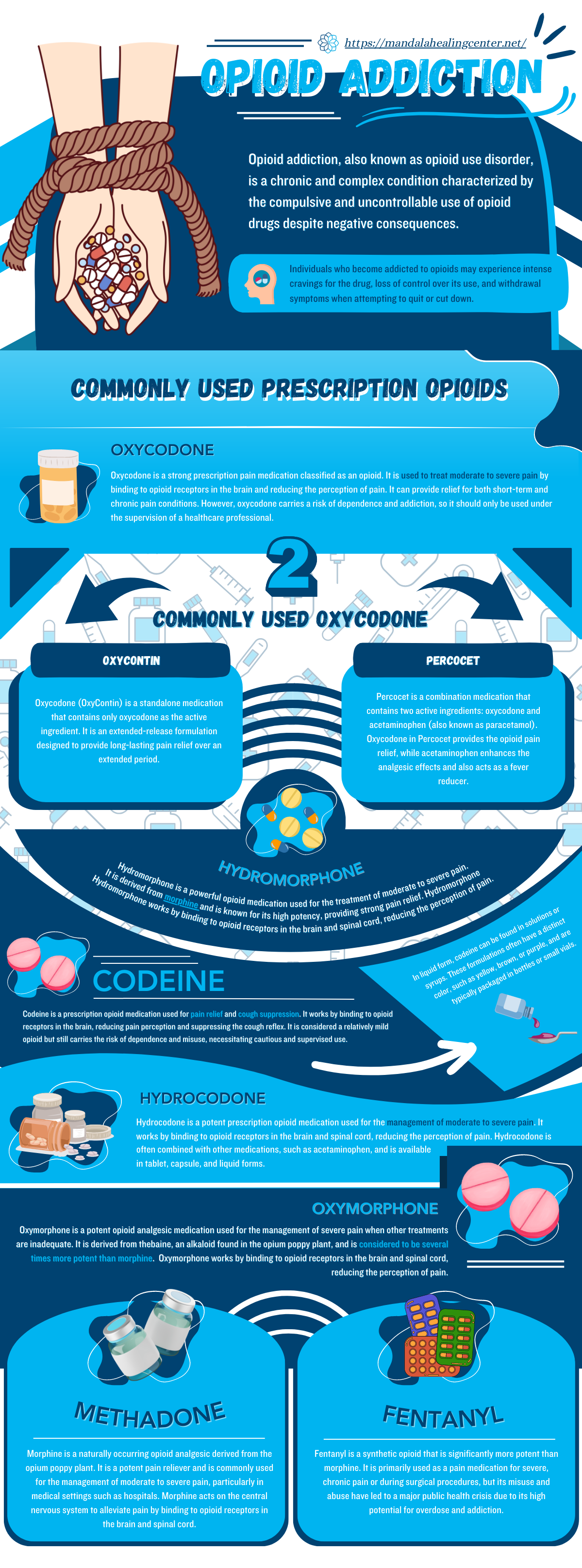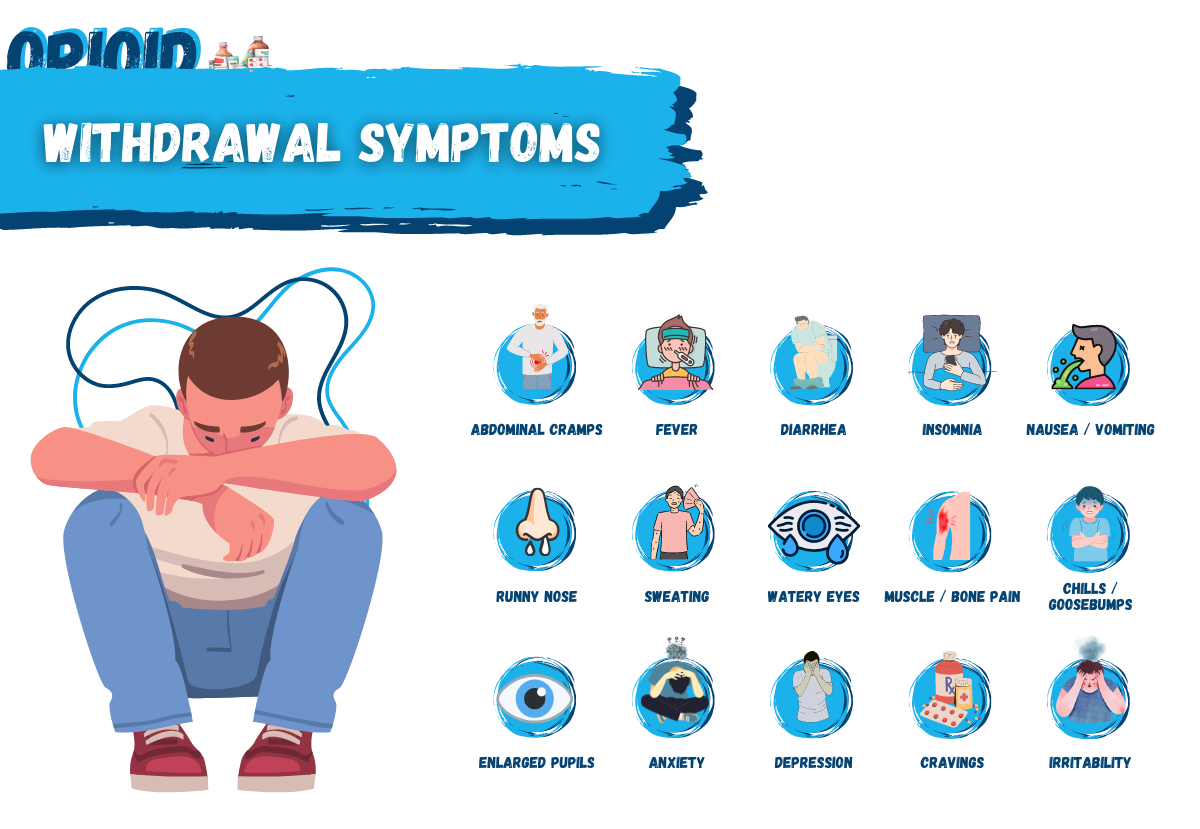Opioid Abuse, Addiction, and Treatment
Opioid abuse has exploded in the past two decades, and the results are deadly. Over 932,000 Americans have died from drug overdoses since 1999, and opioids are responsible for many of those deaths.[1] In 2021 alone, more than 80,000 Americans died as a result of an opioid-related overdose.[2]
An opioid use disorder (OUD) is a serious, sometimes life-threatening medical condition that affects every aspect of a person’s life. Once someone has developed an addiction to opioids, it’s almost impossible for them to stop using these potent drugs–even if they face severe consequences or serious harm.
People living with opioid use disorder or opioid addiction require comprehensive treatment to address the complexities of the condition. Understanding what to expect from opioid addiction treatment can help you get the most out of your time in rehab.

What are Opioids?
Opioids are prescription medications used to relieve moderate to severe pain. Doctors may prescribe opioid painkillers to help people manage pain after surgery and other medical procedures or to relieve chronic pain.[3] Commonly used prescription opioids include:
- Oxycodone (OxyContin, Percocet)
- Codeine
- Hydrocodone (Vicodin)
- Hydromorphone (Dilaudid)
- Oxymorphone (Opana)
- Methadone
- Fentanyl
Heroin is also an opioid but is not used in medical settings and is an illicit substance. Illicitly-manufactured fentanyl is also an illicit substance that is growing in popularity each year.
Opioids work by interacting with opioid receptors in your body’s central nervous system (CNS). They effectively provide pain relief and anesthesia by changing the way the brain responds to pain signals, but have a high risk of abuse and addiction.
Understanding Opioid Abuse and Addiction
In addition to relieving pain, opioids may also cause euphoria and relaxation. People may begin taking prescription opioids to manage pain and begin to misuse them for these pleasurable effects.
Opioid misuse means using these medications in ways that are different than your doctor advised or using any illicit opioid, such as heroin or fentanyl. It could include taking higher doses of the drug, taking it more frequently, or taking it for longer periods than prescribed. Some people may take opioids recreationally, meaning without a prescription.
Taking opioids differently than prescribed can lead to tolerance, meaning you must take more of the drug to get the same effects. Over time, misusing opioids can cause you to develop a physical dependence on the drug. Once you have developed a dependence on opioids, it is nearly impossible to stop using them because of the painful, flu-like withdrawal symptoms that occur if you stop taking opioids after an extended period of time.
Side Effects of Opioids
Both illicit and prescription opioids may cause side effects. They can relieve pain, produce euphoria, and make people feel joyful and relaxed. However, they can also cause potentially harmful side effects, such as:[4]
- Confusion
- Drowsiness
- Nausea
- Constipation
- Euphoria
- Slowed breathing
In high doses, opioids can slow down breathing to dangerous levels and cause an overdose.
Recognizing the Signs of Opioid Abuse and Addiction
Anyone who takes opioids may abuse them or become addicted. It’s important to recognize signs of opioid abuse and addiction and seek treatment if you identify a problem.
Some of the signs of opioid abuse and addiction include:[3]
- Isolating or making new friends quickly
- Mood swings
- Neglecting hobbies, responsibilities, and relationships
- Finishing prescriptions early
- Appearing intoxicated–slurring, having constricted pupils, falling asleep often
- Taking higher doses of the drug or for longer than prescribed
- Doctor shopping–having multiple prescriptions from more than one doctor
- Stealing medications or valuables
- Changes in appearance, sleep, or appetite
Addiction is characterized by a loss of control over your drug use. Symptoms of addiction include:
- Physical dependence, including withdrawal symptoms if you stop taking the drug
- Increasing, heavy, or risky substance use that threatens your health, safety, and ability to care for yourself, or causes strain in your relationships
- Intense cravings for opioids
Seeking immediate opioid addiction treatment as soon as possible is essential because addiction worsens over time and can quickly spiral into a life-threatening condition.
What Happens in an Opioid Detox Center?
Opioid addiction treatment occurs in stages. Many people require the support of an opioid detox before beginning a comprehensive opioid rehab program. When someone uses opioids regularly and then stops, they are likely to experience withdrawal symptoms, including:
- Abdominal cramps
- Fever
- Diarrhea
- Insomnia
- Nausea and vomiting
- Runny nose
- Sweating
- Watery eyes
- Muscle aches and bone pain
- Chills with goosebumps
- Enlarged pupils
- Anxiety
- Depression
- Cravings
- Irritability
Withdrawal symptoms usually begin within 6 to 24 hours after a person’s last dose of opioids and continue to increase in severity for about three days. The severity and duration of a person’s symptoms depend on how often they use opioids, how much they use, their general health, and other factors. Many people find opioid withdrawal so uncomfortable that they relapse–use drugs after a period of abstinence–before the detox process is complete.
In an opioid detox program, patients receive the treatment and support they need to manage withdrawal. Treatment includes medications, such as methadone or buprenorphine (Suboxone), to reduce withdrawal symptoms and cravings and emotional support. Some opioid detox programs also incorporate holistic therapies like nutrition support, yoga, and meditation into detox treatment plans.
Opioid Rehab
Opioid addiction is a complex condition with roots in a person’s biology, history, mental and physical health, and other aspects of who they are. Opioid addiction treatment should be comprehensive, compassionate, and tailored to meet each person’s unique needs and goals.
Treatment is offered in several levels of care, including both inpatient and outpatient opioid rehab programs. The level of care you require depends on the severity of your addiction and other factors. Before beginning treatment, a doctor will assess you and recommend a course of treatment.
Many people begin with residential treatment where they can detox and start their recovery in a safe, supportive environment. During inpatient rehab, clients stay at the treatment facility for the entirety of their treatment program as they spend the days participating in group and individual therapy sessions as well as other complementary services.
After inpatient rehab, clients transition to an outpatient program where they can begin implementing the skills they learned during inpatient rehab in their daily lives while receiving continued support. Attending outpatient rehab is a great way to ensure your success in recovery.
Opioid addiction treatment plans generally include a combination of evidence-based and holistic therapies, including:
- Individual, group, and family therapy
- Relapse prevention education
- Medications
- Mental health treatment
- Holistic therapies like yoga, nutrition support, massage, mindfulness, nature therapy, and more
After completing an opioid rehab program, you must develop and follow an aftercare program that keeps you engaged in the recovery process. This may include attending support groups or 12-step meetings, individual counseling, or completing other levels of addiction treatment.
Medication-Assisted Treatment (MAT) for Opioid Addiction
A popular treatment approach for opioid addiction is medication-assisted treatment (MAT). Medication-assisted treatment (MAT) involves the use of medications, in combination with counseling and behavioral therapies, to help individuals overcome substance use disorders.
Medications such as buprenorphine, methadone, and naltrexone are often used as part of MAT to help individuals manage cravings and withdrawal symptoms, reduce the risk of overdose, and improve their chances of long-term recovery.
Start Opioid Addiction Treatment in West Palm Beach, FL Today
At Mandala Healing Center, we inspire healing in our patients through compassionate care. Going beyond the conventional approach of detoxification, patients at our facility are inspired to fully heal in an environment designed to nourish their entire being.
Clients are taken on a journey of healing through complete immersion into evidence-based clinical modalities, multifaceted alternative therapies, and expert medical management, allowing them to fully detox and recover from drug and alcohol addictions. Through a program of care designed to encourage change, a foundation is created that allows clients to find their higher purpose and reclaim their lives.
If you or a loved one are suffering from opioid addiction or would like to learn more about your treatment options, please reach out to our dedicated admissions counselors today.
References:
- Centers for Disease Control and Prevention (CDC): Death Rate Maps & Graphs, Retrieved April 2023 from https://www.cdc.gov/drugoverdose/deaths/index.html
- National Institute on Drug Abuse (NIDA): Drug Overdose Death Rates, Retrieved April 2023 from https://nida.nih.gov/research-topics/trends-statistics/overdose-death-rates
- National Library of Medicine: Opioid Use Disorder, Retrieved April 2023 from https://www.ncbi.nlm.nih.gov/books/NBK553166/
- National Library of Medicine: Opioid complications and side effects, Retrieved April 2023 from https://pubmed.ncbi.nlm.nih.gov/18443635/
- National Institutes of Health (NIH): Medication-Assisted Treatment for Opioid Use Disorder in a Rural Family Medicine Practice, Retrieved April 2023 from https://www.ncbi.nlm.nih.gov/pmc/articles/PMC7278292/



